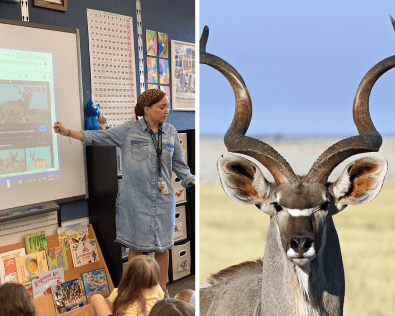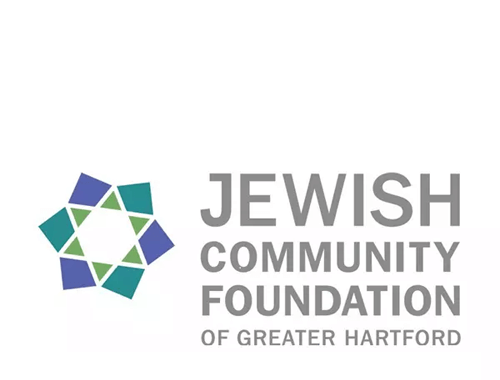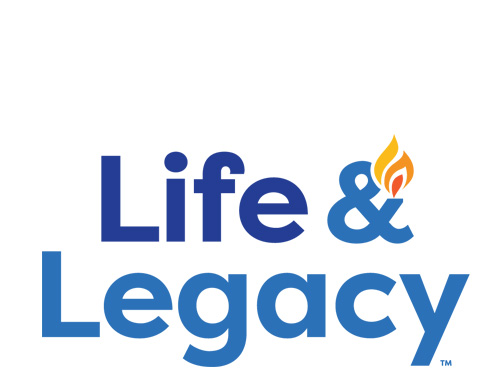- about
- academics
- current parents
- student life
- Prospective Parents
- Donate
Schechter Shavua: September 23, 2022
Building Connections Over Coffee and Conversation
 We are excited to be offering monthly Parent Coffees, an opportunity for parents to get to know each other and also hear about a range of topics from the Schechter Administration. Our first Parent Coffee, held last week, drew a group of both new and veteran Schechter families for schmoozing, coffee, and snacks. In the future, we will begin with some schmoozing time, followed by an informal talk.
We are excited to be offering monthly Parent Coffees, an opportunity for parents to get to know each other and also hear about a range of topics from the Schechter Administration. Our first Parent Coffee, held last week, drew a group of both new and veteran Schechter families for schmoozing, coffee, and snacks. In the future, we will begin with some schmoozing time, followed by an informal talk.
Next up: On Thursday, October 20th at 8:15am , join Rabbi Berger and Anat Climor, the Hebrew Department Head, as they discuss the topic of Israel Education at Schechter. Stop by after you drop off your children, and stay as long as you’re able… we know you might have to duck out to get to work, and we’re happy to have you for any length of time!
Joyous Anticipation of Rosh Hashanah for Schechter Students
Schechter students and faculty are excitedly preparing for Rosh Hashanah! Each class is conducting age-appropriate lessons that help teach about the holiday and connect to other aspects of their learning. A common feeling throughout the school: joy and anticipation for Rosh Hashanah and a sense of pride in our Jewish traditions.
Ilanot (Kindergarten) had a lesson in shofar blowing from Rabbi Chatinover. You can catch their attempts to “play” tekiah gedolah along with him HERE. Feel their excitement!
Anafimstudents (grades 1-2) baked apple honey cake and explored Jewish culture around the globe. Read below for more details.
Alim(grades 3-4) combined science with the holiday, studying scales and weight measurements before discussing the symbolic measurements of good and bad deeds. They used the opportunity to reflect upon the “weight” of their own deeds and choices.
Middle Schoo l students in Nevatim (grades 5-6), Perahim (grade 7), and Amirim(grade 8) wrote personalized Rosh Hashanah cards - in Hebrew - to all of their teachers, using a bank of Hebrew vocabulary words as well as their own personal messages of appreciation and New Year’s wishes.
The Early Childhood Students were busy all week with Rosh Hashanah learning and creativity. Nitzanim (EC2) students baked apple honey cake and made challah covers. Shorashim Aleph (EC3-4) made spin art Rosh Hashanah cards and had a honey tasting using four different varieties of honey; Shorashim Bet (EC3-4) conducted two different science experiments using apples and created adorable cards decorated with honey bees.
In case you missed it, last week, we featured the multi-curricular learning happening through Ilanot’s Apple Tasting and Graphing activity.
For a photo album showing many of these activities, click HERE.
Students Make Connections to Jewish Traditions Throughout the World
 The Anafim class (grades 1-2) has been exploring Jewish culture around the globe. The students, already familiar with the custom in the United States of dipping apples in honey for Rosh Hashanah, learned how Jews in other countries celebrate. In Djerba (an island off Tunisia), children gather fallen olives from the olive groves throughout the month of Elul; the morning before Rosh Hashanah, they bring the olives to the streets and ask passers-by if they'd like to recite a blessing on the olives that their mitzvot should be as many as the olives that fall from the trees. In Turkey, some Jews eat Passover matzah so that they should be saved from evil decrees just as we were back when we left Egypt. The students created their own versions of simmanim(signs or symbolic foods) that they'd like to do in their own homes.
The Anafim class (grades 1-2) has been exploring Jewish culture around the globe. The students, already familiar with the custom in the United States of dipping apples in honey for Rosh Hashanah, learned how Jews in other countries celebrate. In Djerba (an island off Tunisia), children gather fallen olives from the olive groves throughout the month of Elul; the morning before Rosh Hashanah, they bring the olives to the streets and ask passers-by if they'd like to recite a blessing on the olives that their mitzvot should be as many as the olives that fall from the trees. In Turkey, some Jews eat Passover matzah so that they should be saved from evil decrees just as we were back when we left Egypt. The students created their own versions of simmanim(signs or symbolic foods) that they'd like to do in their own homes.
Students also engaged in cross-curricular lessons about the shofar. In addition to discussing the sounds it makes, what we feel when we listen to the shofar, and different types of shofarot , they learned about the Yemini shofar that comes from a Kudu, an animal that lives in Africa, and the kudu’s habitat. Students discussed what makes a shofar kosher: the horns of a kosher animal must be used. And, in true age-appropriate fashion, a lively debate broke out about whether a dinosaur shofar might be kosher (it isn't.)
A Request from Anafim Teachers for the Schechter Community
We are excited about some new units coming up in our Anafim(1st and 2nd) grade classroom! As you are going through your books, if you have any of the books below that you'd be willing to share with the school, please send them our way! At the moment we are only looking for the books on this list, but we will reach out when we are ready for more that you may want to send our way!
Thanks so much!
-Yeshiva and Tiff
Abe Lincoln: The Boy Who Loved Books, Kay Winters
Chrysanthemum, Kevin Henkes
Max's Words, Kate Banks
Swimmy, Leo Lionni
Wonderful Words, Lee Bennett Hopkins
The Art Lesson, Tom dePaola
Best Wishes, Cynthia Rylant
The Jolly Postman, Janet Ahlberg
The Luckiest Kid on the Planet, Lisa Campbell Ernst
Martin's Big Words, Doreen Rappaport
Martina the Beautiful Cockroach, Carmen Agra Deedy
Mr. Rabbit and the Lovely Present, Charlotte Zolotow
Poetry for Young People: Robert Frost, edited by Gary Schmidt
Seeing the Circle, Joseph Bruchac
Show; Don't Tell! Josephine Nobisso
Spiders, Nic Bishop
Written Anything Good Lately? Susan Allen
Parashat Nitzavim/Rosh Hashanah
 Parashat Nitzavim always falls on the Shabbat preceding Rosh Hashanah. Why? One reason is that the parashah contains a powerful message about teshuvah, repentance, which is appropriate for this season of repentance. But there are other significant connections too—and one revolves around the importance of being inclusive.
Parashat Nitzavim always falls on the Shabbat preceding Rosh Hashanah. Why? One reason is that the parashah contains a powerful message about teshuvah, repentance, which is appropriate for this season of repentance. But there are other significant connections too—and one revolves around the importance of being inclusive.
Who is part of the covenant, and who is part of the community? It’s all too easy to arrive at a very narrow answer. For example, since only baby boys have a brit milah, some have wondered whether females have the same membership in the covenant. (The answer, to an overwhelming number of rabbis, ancient and modern, is “Yes”—but the question is understandable.) Similarly, it’s all too easy for Jews who don’t read Hebrew, or who can’t afford to join a synagogue, to feel like they don’t really belong in the community. Should a lack of Jewish knowledge, or money, or social status make someone feel excluded, or like a second-class citizen? Of course not. But does it happen? All the time.
Perhaps this is why in Parashat Nitzavim, Moses began his speech with a very deliberate description of his audience:
You stand this, all of you, before the Lord your God—
Your tribal heads, your elders and your officials, all the men of Israel,
Your children, your wives, even the sojourner within your camp,
from the chopper of your wood to the drawer of your water—
To enter into the covenant of the Lord your God.
(adapted from the NJPS Tanakh)
Why did he list all of those groups in this way? In broad terms, Moses mentions four groups: (1) high-status officials; (2) average-status males; (3) women and children; (4) loyal non-Jews. Moses knew that if he just started speaking, his listeners (and we) might have assumed that he was really only addressing one of the first groups—so he let them know, “All of you are my audience; all of you are entering into the covenant with God.”
What a perfect message for Rosh Hashanah! Let’s go out of our way this year to make sure that no one feels excluded, and that no one feels like a second-class citizen. In the Schechter community and in the eyes of God, we are all of equal importance; that’s what makes us a community.
Shabbat shalom and shanah tovah,
Rabbi Jonathan Berger
Head of School
Questions for the Shabbat/Holiday table:
1. How do you think Moses’s audience reacted to his message?
2. Can you think of unintended barriers in the Schechter community—unintentional signals that might make someone feel like they weren’t really full partners? If so, please be in touch with me so we can talk about addressing them.
Solomon Schechter Day School
of Greater Hartford
26 Buena Vista Road
West Hartford, CT 06107
© Solomon Schechter Day School of Greater Hartford | Site design Knowles Kreative




